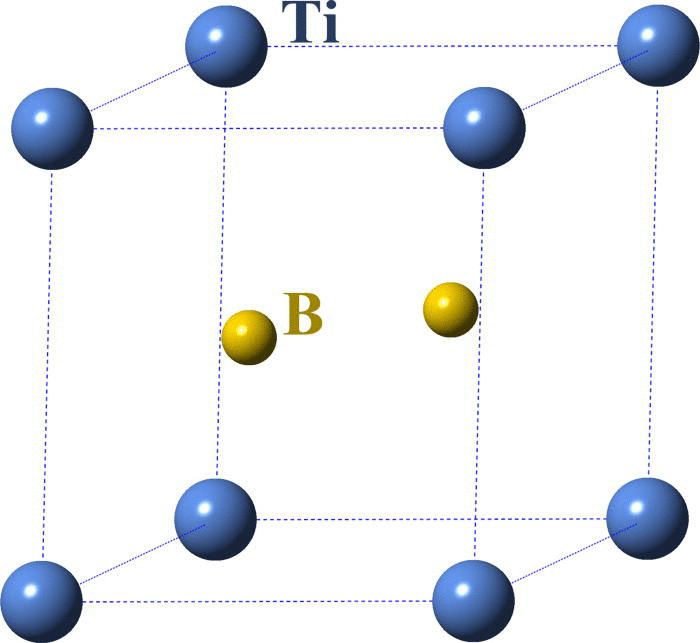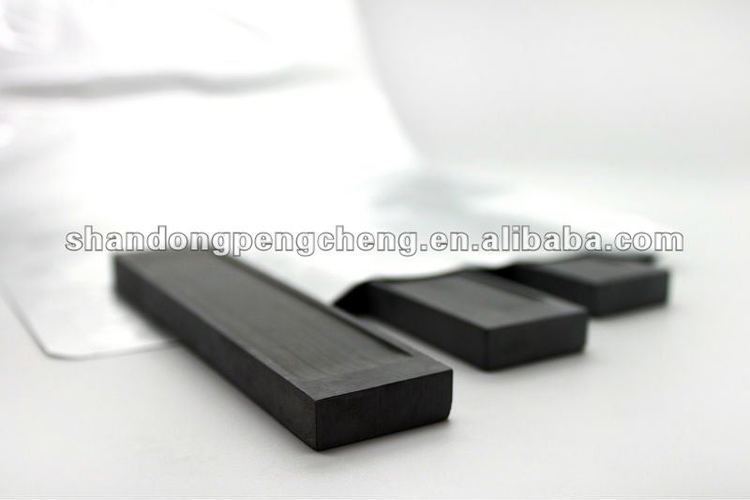Density 4.52 g/cm³ Molar mass 69.489 g/mol | Formula TiB2 | |
 | ||
Appearance non lustrous metallic grey | ||
Self propagating high temperature synthesis shs of titanium diboride tib2
Titanium diboride (TiB2) is an extremely hard ceramic which has excellent heat conductivity, oxidation stability and resistance to mechanical erosion. TiB2 is also a reasonable electrical conductor, so it can be used as a cathode material in aluminium smelting and can be shaped by electrical discharge machining.
Contents
- Self propagating high temperature synthesis shs of titanium diboride tib2
- Titanium diboride and zirconium diboride based systems
- Physical properties
- Chemical properties
- Production
- Potential applications
- Compare
- References

Titanium diboride and zirconium diboride based systems
Physical properties

TiB2 is very similar to titanium carbide, an important base material for cermets, and many of its properties (e.g. hardness, thermal conductivity, electrical conductivity and oxidation resistance) are superior to those of TiC:

Chemical properties
With respect to chemical stability, TiB2 is more stable in contact with pure iron than tungsten carbide or silicon nitride.
TiB2 is resistant to oxidation in air at temperatures up to 1100 °C, and to hydrochloric and hydrofluoric acids, but reacts with alkalis, nitric acid and sulfuric acid.
Production
TiB2 does not occur naturally in the earth. Titanium diboride powder can be prepared by a variety of high-temperature methods, such as the direct reactions of titanium or its oxides/hydrides, with elemental boron over 1000 °C, carbothermal reduction by thermite reaction of titanium oxide and boron oxide, or hydrogen reduction of boron halides in the presence of the metal or its halides. Among various synthesis routes, electrochemical synthesis and solid state reactions have been developed to prepare finer titanium diboride in large quantity. An example of solid state reaction is the borothermic reduction, which can be illustrated by the following reaction
2 TiO2 + B4C + 3C → 2 TiB2 + 4 COThese synthesis routes, however, cannot produce nanosized powders. Nanocrystalline (5–100 nm) TiB2 was synthesized using the following techniques:
Many TiB2 applications are inhibited by economic factors, particularly the costs of densifying a high melting point material - the melting point is about 2970 °C, and, thanks to a layer of titanium dioxide that forms on the surface of the particles of a powder, it is very resistant to sintering. Admixture of about 10% silicon nitride facilitates the sintering, though sintering without silicon nitride has been demonstrated as well.
Thin films of TiB2 can be produced by several techniques. The electroplating of TiB2 layers possess two main advantages compared with physical vapor deposition or chemical vapor deposition: the growing rate of the layer is 200 times higher (up to 5 μm/s) and the inconveniences of covering complex shaped products are dramatically reduced.
Potential applications
Current use of TiB2 appears to be limited to specialized applications in such areas as impact resistant armor, cutting tools, crucibles, neutron absorbers and wear resistant coatings.
TiB2 is extensively used as evaporation boats for vapour coating of aluminium. It is an attractive material for the aluminium industry as an inoculant to refine the grain size when casting aluminium alloys, because of its wettability by and low solubility in molten aluminium and good electrical conductivity.
Thin films of TiB2 can be used to provide wear and corrosion resistance to a cheap and/or tough substrate.
